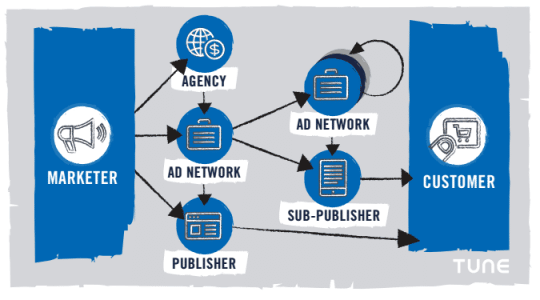
If you’re not already talking to your phone, television, or car, don’t worry — you’re not alone. But you will be soon.
By 2020, ComScore estimates that 50% of all searches worldwide will be voice searches. Google has already seen the trend take off, stating in 2017 that 20% of all mobile searches submitted via its app were done using voice. Add Apple, Microsoft, Amazon, and others to the mix, and it really adds up.
To prep marketers for the voice-driven future, in this blog post we’ll discuss why voice and mobile are a match made in heaven, and then cover real ways marketers are using voice to more deeply engage with their audiences.
Mobile and Voice: The Perfect Pair
Mobile and voice work well together for several reasons.
Customers bring mobile devices with them everywhere. It’s estimated that 91% of consumers keep their smartphones within arm’s reach. With voice, anything a customer needs (within reason) is also within reach: They can ask Siri for directions before driving to a grocery store, search Alexa for recipes while cooking in the kitchen, and have the smart refrigerator add milk to the list when the carton’s empty. Voice allows for a stream-of-consciousness interaction with mobile and smart devices, enabling customers to ask questions or make requests whenever and wherever they want.
Speaking is faster than typing. Voice fits with the fast-paced lives of today’s consumers. It allows for hands-free help on-the-go, unlike texting or web browsing. Similarly …
Voice is more natural to how we actually talk and think. Whereas a consumer might Google the keywords “Seattle weather forecast,” voice allows them to cut straight to what they really want to know: “Is it going to rain today?”
Voice can fulfill a desire at the moment it arises. There’s no better time to sell to a customer than when they actually want a product. Unlike email campaigns and banner ads, voice is able to direct customers to the exact product they want, right when they want it.
How to Leverage the Power of Voice with Mobile
The perfect match is still just potential until marketers make it work for them. Below are six ways we’re seeing marketers leverage voice and mobile together.
1. Understanding Who the Customer Really Is
Until recently, marketers could only create customer experiences that were locked to a specific time and place, like opening an email, driving past a billboard, or reading the newspaper. Thanks to smartphones, customers now carry marketers in their pockets wherever they go — and that opens up a world of opportunities.
This constant connection provides marketers not only with insights on where customers leverage voice assistants, but other key data as well: the time of day they like to shop, what kind of shopper they are, the sense of urgency they have in certain situations. Marketers are using this continual data stream to create more contextual, enjoyable experiences for their customers. (With great power comes great responsibility, however — every marketer must be careful to respect privacy preferences and personal information.)
2. Considering How Brands Can Become Voice-driven
Companies must anticipate that the products they create will become the voice engines of the future. While consumers currently talk to smartphones via suave-voiced AIs like Apple’s Siri or Microsoft’s Cortana, or to home voice assistants like Amazon’s Alexa and Google’s Assistant, in the near future they will talk directly to their refrigerators, cars, and microwaves. eMarketer already estimates that 45 million voice-assisted devices are in use in the U.S., and predicts that number will rise to 67 million by 2019. The smartest companies are anticipating that their products will one day need to offer voice — or be outsold by ones that do.
3. Analyzing What Questions Are Asked Most and How They’re Being Asked
Whereas search engines leave marketers to assess long-tail keywords in an effort to extrapolate what customers actually want, voice gives marketers an entirely new picture of the questions customers are asking.
Marketers can use this insight to both answer the most frequently asked questions and to understand at which stage in the customer journey they’re being asked. With this data marketers can discover content gaps or engagement opportunities, which could then be proactively addressed in sales materials or content.
4. Laying the Foundation for First Place
Along with this new territory comes a startling realization: It’s no longer enough to be on the first page of Google search results. Brands must be first, period. Consumers using voice are less likely to listen to a dozen suggestions than those using traditional search methods; instead, they’ll take the first one or two delivered via voice. To stand a chance of being first in the future, brands must start making voice part of their overall strategy today.
5. Creating a Better Customer Experience
With more insight into who and where customers are and why they ask for something, brands have a greater ability to predict what a customer needs before they do.
For example: A customer at the airport asks via voice if a flight is on time. Confirming the flight status is useful, as it answers the question; providing the gate number and departure time as well adds value, as the customer now knows how much time they have to grab a cup of coffee on the way. More data means marketers will be able to create more valuable, context-driven experiences — and customers will increasingly come to expect it.
6. Connecting the Entire Customer Journey
By connecting the dots when a person is on the web, on mobile, at work, at a restaurant, in the mall, or at the airport, companies get a more complete picture of their customer, down to the individual instead of the demographic.
Effective marketing is no longer about creating a targeted campaign with channels. It’s about creating valuable, personalized experiences across the entire ecosystem. For the foreseeable future, mobile is that ecosystem; the customer is the center. Today’s marketers now have access to both. The task at hand is acquiring the technology that can measure it.
What’s Ahead
Voice is just one of the technologies mentioned in our latest report: Marketing Technology 2018: 350 Marketers, CEOs, and Influencers Predict the Future. Check out the full article to learn what leading marketers predict will make or break voice and mobile, as well as the success they’ve found in combining the two.
Author
Becky is the Senior Content Marketing Manager at TUNE. Before TUNE, she handled content strategy and marketing communications at several tech startups in the Bay Area. Becky received her bachelor's degree in English from Wake Forest University. After a decade in San Francisco and Seattle, she has returned home to Charleston, SC, where you can find her strolling through Hampton Park with her pup and enjoying the simple things between adventures with friends and family.




Leave a Reply
You must be logged in to post a comment.